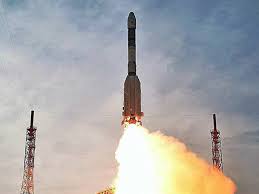Barely a year has passed since its first interplanetary mission, Mangalyaan, entered the orbit of Mars, and ISRO has crossed yet another important milestone. The ASTROSAT is India’s first attempt at setting up an observatory in space, a place from where it can study cosmological phenomena.
ASTROSAT, which is carrying five payloads, including an ultraviolet Imaging Telescope (UVIT), is being described as India’s version of the Hubble telescope that NASA had put in space in 1990 and which continues to be operational.
All the payloads and instruments on ASTROSAT are meant for observation of celestial processes, and the mission is aimed at obtaining data that will help in a better understanding of the universe.
In some ways, ASTROSAT is a very different mission for ISRO and will add a new dimension to its capabilities. Chandrayaan and Mangalyaan, the moon and Mars missions respectively, were essentially technology-demonstration projects, at least when they were planned. This is not to say there was no science component in these, or that these did not add to our scientific knowledge. Chandrayaan, in fact, confirmed the presence of water on the moon. But these missions were essentially building the foundation for India’s deeper exploration into space.
The various other satellites that ISRO has placed in space over the last three decades were mainly geared at applications – remote sensing, communications, mapping, navigation and many others. Again, these are essential aspects of a country’s space programme.
But with ASTROSAT, ISRO is attempting to fulfil what is the core mandate of any space agency — study of astronomical phenomena.
The study of the celestial process can be done from the earth as well. Several observatories across the globe have powerful telescopes that can ‘see’ what is happening deep inside the universe. Still, there are merits in having a sky observatory. The atmosphere around the earth interferes with the signals from space and changes their characteristics. What the instruments at earth receive are modified signals. These have to be adjusted to bring in accuracy.
A space observatory on the other hand, receives pure signals because of which the readings by instruments are more accurate.
Just like the case with many other kinds of space capabilities, the 1500-kg ASTROSAT, which has a mission life of five years, will put ISRO in a very exclusive club of nations that have space-based observatories. Only the United States, European Space Agency, Japan and Russia have such observatories in space.
IndianBureaucracy.com wishes the very best.





